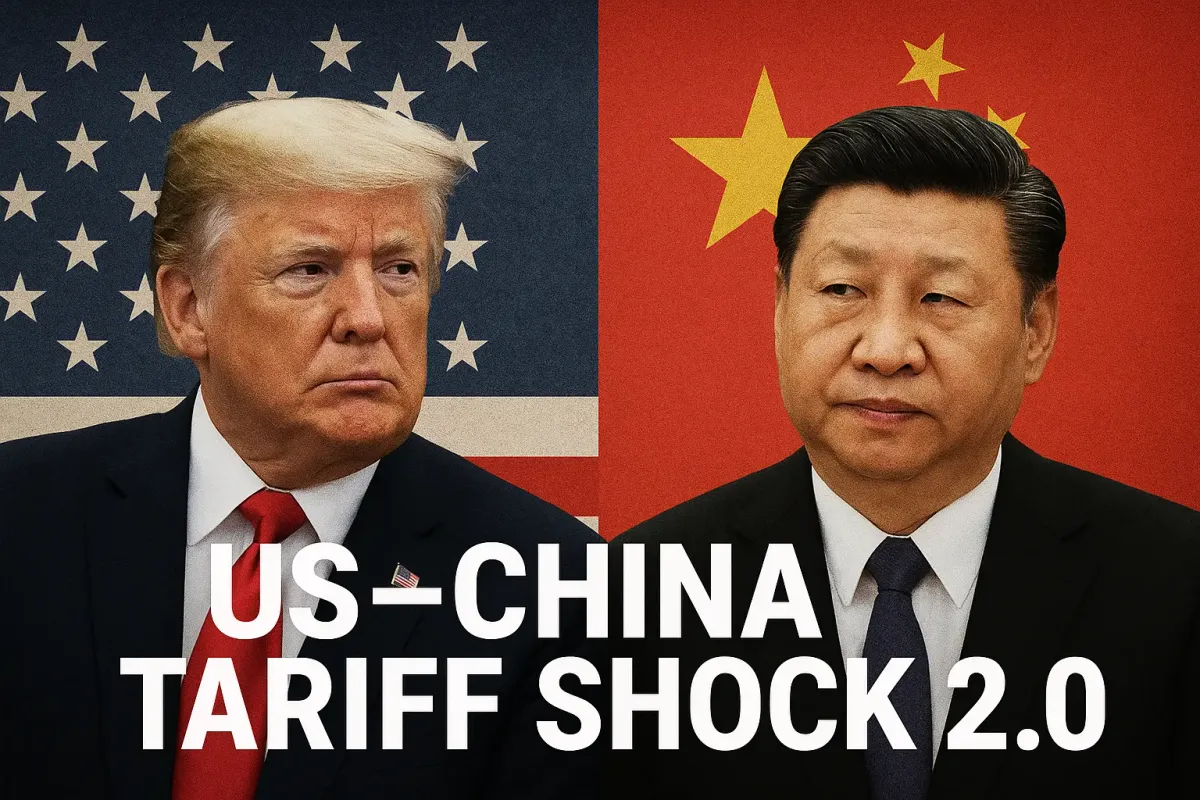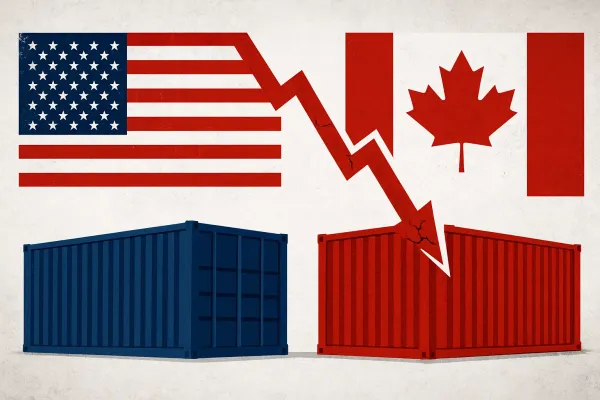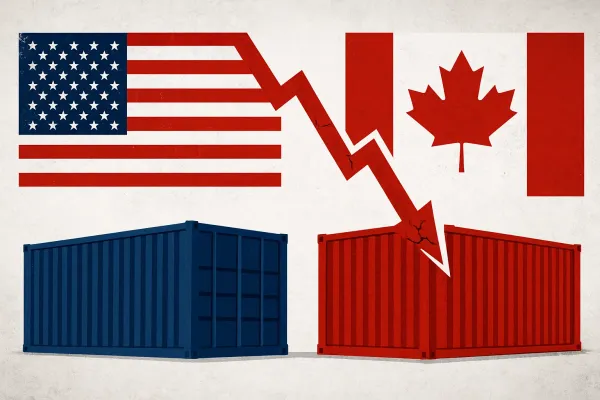Tariff Shock 2.0: Why US–China Controls Are Repricing the World Economy
US–China tariffs and export controls are repricing the world—raising costs, constraining chips and minerals, and pushing supply chains to de‑risk. What it means for inflation, tech access, and strategy.

The escalation of tariff threats and tightened export controls between the United States and China in mid-October 2025 marks a sharper, more structural phase of geoeconomic competition that is reverberating across asset markets, supply chains, and technology ecosystems worldwide. China’s expansion of rare earths export controls, including tighter licensing on magnet materials and elements essential for semiconductors and clean tech, adds a potent countermove that raises costs and increases production risk globally. Market volatility—spanning equities, credit, commodities, and crypto—reflects not just headline risk, but deeper uncertainty about access to inputs, the pricing of technology capabilities, and the durability of post-2010 globalization patterns. ( Sources: BBC, Reuters, CNBC )
What changed in October
- Rhetoric and risk premium: President Trump publicly floated “up to 100%” tariffs on a broad array of Chinese imports, while officials indicated a readiness to recalibrate export controls on advanced AI chips and related toolchains, inserting new uncertainty into revenue models and cross-border licensing strategies. ( Source: CNBC )
- China’s material leverage: Beijing broadened rare earths and strategic minerals controls, tightening licensing for magnet exports and semiconductor-adjacent uses, signalling willingness to weaponize upstream chokepoints where it dominates processing capacity. ( Source: Reuters )
- Markets blinked: Headlines triggered outsized cross-asset moves—U.S. and global stocks sold off, liquidity favoured defencives, and crypto swung as traders repriced policy path risks, implementation timing, and retaliation scenarios. ( Source: CNBC )
How tariff shocks transmit globally
- Direct cost pass-through: Tariffs on intermediate goods lift producer prices, particularly in electronics, machinery, and consumer durables; with limited short-run substitution, pass-through to core goods inflation can rise in multiple economies simultaneously.
- Rerouting frictions: “Friendshoring” and supplier diversification increase duplication costs (tooling, compliance, logistics), embedding a higher structural cost base for traded goods and lengthening delivery times during transitions.
- Financial conditions: Risk-off episodes tighten dollar funding, pressure EM FX, and amplify local-currency import costs—especially for energy and food components priced globally—feeding broad inflation pressures beyond the U.S. and China.
Technology decoupling: capabilities, not just costs
- Compute chokepoints: U.S. controls on advanced AI chips and chipmaking equipment aim to cap China’s access to leading-edge compute; prospective rule “tuning” or licensing tied to revenue or performance bands introduces planning risk for global suppliers and integrators.
- Toolchain dependencies: Constraints on EDA software and specialized industrial tools can ripple across design-to-fab workflows, delaying roadmaps and raising compliance overhead internationally, even for firms outside the tariff crosshairs.
- Materials counterplay: China’s tighter rare earths regime—covering specific elements and magnet supply—presses EVs, wind, defence avionics, and industrial automation globally, forcing costly parallel investment in non-Chinese processing capacity over multi-year horizons.
Global inflation dynamics: who feels it, when
- Advanced economies: Europe and the U.S. face renewed core goods pressure if tariff breadth expands and materials stay tight, with expectations channels magnifying the effect as firms pre-emptively raise prices and adjust inventories.
- Emerging markets: Economies with high import-content manufacturing (electronics, automotive, appliances) face faster pass-through; weaker FX during risk-off episodes can import inflation via dollar-priced inputs, complicating monetary policy trade-offs.
- Energy-tech nexus: If rare earths and magnet constraints stall clean-tech deployments at the margin, substitution toward legacy inputs could add transient demand for hydrocarbons, modulating fuel price baselines and headline CPI globally.
Supply chains: from just-in-time to just-in-case
- Multisourcing as default: OEMs are moving from China-centric to China-plus-N, with parallel vendor qualifications in ASEAN, Mexico, and parts of Eastern Europe, accepting higher unit costs in exchange for resilience and regulatory agility.
- Inventory strategy: Higher “safety stock” for strategic inputs (magnets, specialty chemicals, chip components) is becoming normalized, raising working capital needs and squeezing margins across global manufacturing.
- Contracting and clauses: Trade-war clauses—surge pricing, tariff pass-through, force majeure linked to export controls—are proliferating in global contracts, formalizing risk-sharing between buyers and suppliers.
Capital markets and corporate strategy
- Equities: Hardware, autos, and industrials with China-exposed inputs tend to underperform on tariff headlines; firms with pricing power or domesticized supply chains command valuation premia during policy uncertainty.
- Credit: Suppliers near chokepoints may see spread widening due to inventory and capex needs; conversely, logistics, testing/packaging, and equipment firms aligned with capacity relocation can benefit.
- M&A and capex: Expect more brownfield expansions in “safe” jurisdictions, JV structures for critical minerals processing, and selective acquisitions to onshore capabilities otherwise tied to contested toolchains.
Rare earths and critical minerals: the new fulcrum
- Scope and specificity: Recent Chinese measures expanded elements and tightened licensing for defence and semiconductor-linked uses; documentation and end-use verification hurdles slow flows even when approvals are granted.
- Western response: G7 signalled unity on export controls coordination and supplier diversification, which likely channels public financing toward non-China processing, recycling, and substitution R&D over the next 12–24 months. ( Source: Reuters )
- Timing mismatch: Bringing new processing online is slower than policy cycles; in the interim, volatility in prices and delivery times should be assumed across EV, wind, and electronics supply chains globally.
Policy outlook: scenarios for the next 6–12 months
- Escalation-lite: Maximalist tariff rhetoric with narrower enacted measures after talks; markets whipsaw but avoid systemic stress; decoupling proceeds incrementally as firms refuse to roll back de-risking.
- Tit-for-tat expansion: Wider tariff bases plus stricter export curbs; producer prices rise, capex slows in exposed sectors, and trade diversion intensifies toward third countries with capacity and policy predictability.
- Managed truce: Time-bound relaxations (quota windows, element-specific licensing, narrow chip SKU allowances) stabilize prices; however, the credibility shock sustains higher risk premia for globally traded tech and materials.
How multinationals can hedge now
- Map HS-code and control risk: Build a live registry of tariff exposure and export-control nodes across components, software, and services; pre-negotiate cost pass-through and alternative fulfilment routes with Tier-1 and Tier-2 suppliers.
- Dual vendor depth: Qualify at least one non-China and one China-based supplier for strategic inputs to balance cost, resilience, and regulatory flexibility; consider consortia for magnet and rare earth processing to secure medium-term supply.
- Financial resilience: Increase FX hedging and liquidity buffers; stress test working capital for 60–90 days of elongated lead times; expect higher logistics and insurance premia in peak tariff/control windows.
- Compliance-by-design: Embed export-control screening and automated license tracking into PLM/ERP systems to avoid shipment holds and penalties; align sales forecasting with probable licensing cadence rather than optimistic scenarios.
For investors and boards
- Prefer resilience plays: Logistics nodes, testing/packaging, alternative processing, and industrial automation enabling supplier diversification have favourable asymmetry in prolonged uncertainty.
- Beware stealth exposure: Consumer brands and SaaS vendors can face hidden upstream risk if hardware dependencies or support tooling are anchored in controlled jurisdictions; look through to BOM and toolchain layers before sizing positions.
- Watch policy cadence: Signals from Washington, Beijing, and G7 forums on licensing frameworks, element lists, and carve-outs often reprice sectors in hours; governance processes must shorten reaction times accordingly.
Bottom line
The 2025 tariff-control mix fuses blunt tariffs with precise chokepoint restrictions, turning price and capability access into concurrent pressure points across the global economy. The result is higher structural costs, tighter compliance constraints, and elevated risk premia for technology and materials-intensive industries worldwide. Even if rhetoric moderates, firms and investors should assume that de-risking, supplier diversification, and compliance-by-design are now embedded features of the global business environment—not temporary detours.
Related Articles:
- Trump’s Claim vs India’s Energy Reality: Will New Delhi Stop Buying Russian Oil — Or Just Diversify Smarter? — Why India is unlikely to “quit” Russian crude overnight, and how diversification, pricing, and diplomacy shape a more pragmatic energy strategy.
- Power Plays: How the U.S. Leverages Energy and Climate for Global Diplomacy – See how major powers use governance tools for international influence—context for understanding India's own strategic approaches.
- India's Strategic Balancing Act - 2025: Managing Relations with the US, Russia, and China – Explore how India's domestic political priorities shape its foreign policy approach and navigation of great power competition.
- 2025 Russia–Ukraine War Analysis: NATO's Role, Trump, and What's Next – Understand global geopolitical shifts that influence India's strategic calculations and policy decisions.
- From Allies to Adversaries: How the Taliban–Pakistan Relationship Broke Down and What It Means for South Asia – Why Pakistan–Taliban tensions raise cross‑border security risks, disrupt regional trade corridors, and complicate India’s energy logistics and strategic planning.
Sources:
- BBC — Trump threatens additional 100% tariff on China
- Reuters — China tightens rare earth export controls
- Reuters — How China’s new rare earth export controls work
- CNBC — Cross‑asset market reaction to tariff headlines
- Reuters — G7 agrees to keep united front on China export controls; diversify suppliers
Loved this article?
Visit our main page for more insights and subscribe for updates!





